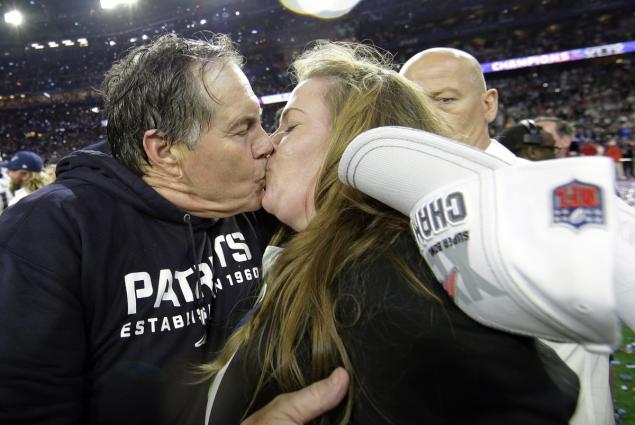We’ve all been able to sit back and laugh at how terribly Roger Goodell has handled the Deflategate incident, but now more has come out that will probably make us more annoyed and pissed off than anything. According to this extensive research project by Don Van Natta, Jr. and Seth Wickersham for ESPN’s Outside the Lines, the Patriots had schemed a way to record teams and their signals and act like it was within the rules. For over a decade.
But league insiders knew that Deflategate didn’t begin on the eve of the AFC Championship Game.
It began in 2007, with Spygate.
Interviews by ESPN The Magazine and Outside the Lines with more than 90 league officials, owners, team executives and coaches, current and former Patriots coaches, staffers and players, and reviews of previously undisclosed private notes from key meetings, show that Spygate is the centerpiece of a long, secret history between Goodell’s NFL, which declined comment for this story, and Kraft’s Patriots. The diametrically opposed way the inquiries were managed by Goodell — and, more importantly, perceived by his bosses — reveals much about how and why NFL punishment is often dispensed. The widespread perception that Goodell gave the Patriots a break on Spygate, followed by the NFL’s stonewalling of a potential congressional investigation into the matter, shaped owners’ expectations of what needed to be done by 345 Park Ave. on Deflategate.
It was, one owner says, time for “a makeup call.”
…
AS THE PATRIOTS became a dynasty and Belichick became the first coach to win three Super Bowls in four years, an entire system of covert videotaping was developed and a secret library created. “It got out of control,” a former Patriots assistant coach says. Sources with knowledge of the system say an advance scout would attend the games of upcoming Patriots opponents and assemble a spreadsheet of all the signals and corresponding plays. The scout would give it to Adams, who would spend most of the week in his office with the door closed, matching the notes to the tapes filmed from the sideline. Files were created, organized by opponent and by coach. During games, Walsh later told investigators, the Patriots’ videographers were told to look like media members, to tape over their team logos or turn their sweatshirt inside out, to wear credentials that said Patriots TV or Kraft Productions. The videographers also were provided with excuses for what to tell NFL security if asked what they were doing: Tell them you’re filming the quarterbacks. Or the kickers. Or footage for a team show.
The cameramen’s assignments differed depending on the opponent. For instance, Walsh told investigators that against Indianapolis he was directed to take close-ups of the Colts’ offensive signals, then of Peyton Manning’s hand signals. Mostly, though, the tapes were of defensive signals. Each video sequence would usually include three shots: the down and distance, the signal, and, as an in-house joke, a tight shot of a cheerleader’s top or skirt. The tape was then often edited, sources say, so that Adams’ copy contained only the signals, in rapid fire, one after another. According to investigators, Walsh once asked Adams, “Are the tapes up to standards?”
“You’re doing a good job,” Adams said. “But make sure that you get everyone who’s giving signals, even dummy signals.”
And that’s just a taste of it. Read the entire report here.
You think back to how close the Eagles were… maybe that was really Andy Reid’s best coached game.

